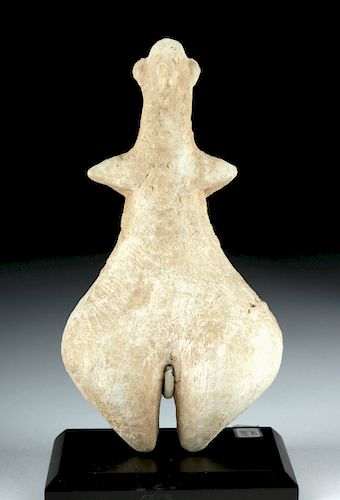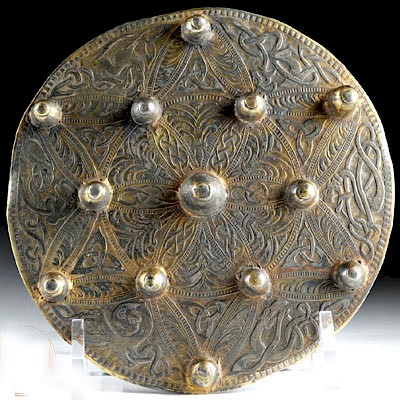Amlash Marble Female Idol - Goddess of Fertility
Lot 52
About Seller
Artemis Gallery
686 S Taylor Ave, Ste 106
Louisville, CO 80027
United States
Selling antiquities, ancient and ethnographic art online since 1993, Artemis Gallery specializes in Classical Antiquities (Egyptian, Greek, Roman, Near Eastern), Asian, Pre-Columbian, African / Tribal / Oceanographic art. Our extensive inventory includes pottery, stone, metal, wood, glass and textil...Read more
Estimate:
$6,000 - $9,000
Absentee vs Live bid
Two ways to bid:
- Leave a max absentee bid and the platform will bid on your behalf up to your maximum bid during the live auction.
- Bid live during the auction and your bids will be submitted real-time to the auctioneer.
Bid Increments
| Price | Bid Increment |
|---|---|
| $0 | $25 |
| $300 | $50 |
| $1,000 | $100 |
| $2,000 | $250 |
| $5,000 | $500 |
| $10,000 | $1,000 |
| $20,000 | $2,500 |
| $50,000 | $5,000 |
| $100,000 | $10,000 |
| $200,000 | $20,000 |
About Auction
By Artemis Gallery
Jul 19, 2018
Set Reminder
2018-07-19 10:00:00
2018-07-19 10:00:00
America/New_York
Bidsquare
Bidsquare : Fine Antiquities/Ethnographic Art
https://www.bidsquare.com/auctions/artemis-gallery/fine-antiquities-ethnographic-art-3329
Featuring classical antiquities, ancient and ethnographic art from cultures encompassing the globe, plus fine art. Artemis Gallery info@artemisgallery.com
Featuring classical antiquities, ancient and ethnographic art from cultures encompassing the globe, plus fine art. Artemis Gallery info@artemisgallery.com
- Lot Description
Ancient Near East, northwestern Iran, Amlash, ca. 1200 to 800 BCE. A creamy white marble idol each with a distinctive beak-like nose, a narrow torso that widens at the waist, arms stretched outward, and broad thighs that are huge compared to the body. Ancient idols like this one, that reduce the human figure to a simple collection of shapes and lines, are considered some of our oldest abstract art. They fascinate us today in part because they hint at a belief system and cosmology that we can no longer access or understand. Instead, we guess at the meaning. Were they fertility charms? Representations of old gods? Were they made to be carried as apotropaic charms, or simply to be placed in tombs? Their mute figures raise more questions than they answer. Size: 2.95" W x 5.5" H (7.5 cm x 14 cm) Size: 2.95" W x 5.5" H (7.5 cm x 14 cm)
Bird-faced figurines like this one are found throughout the region. Although their meaning is unclear, most female figures found by largely male archaeologists of the late nineteeth and early twentieth century were immediately given the title "fertility idol". However, more recent interpretations suggest that these figures probably had much more nuanced and varied symbolism, perhaps representing a goddess, a matriarch, or a worshipper.
Provenance: private New York, USA collection
All items legal to buy/sell under U.S. Statute covering cultural patrimony Code 2600, CHAPTER 14, and are guaranteed to be as described or your money back.
A Certificate of Authenticity will accompany all winning bids.
We ship worldwide and handle all shipping in-house for your convenience.
#136285Intact, with light scratching and wear on surface commensurate with age. A few small chips and nicks from surface.Condition
- Shipping Info
-
All shipping is handled in-house for your convenience. Your invoice from Artemis Gallery will include shipping calculation instructions. If in doubt, please inquire BEFORE bidding for estimated shipping costs for individual items.
-
- Buyer's Premium



 EUR
EUR CAD
CAD AUD
AUD GBP
GBP MXN
MXN HKD
HKD CNY
CNY MYR
MYR SEK
SEK SGD
SGD CHF
CHF THB
THB














